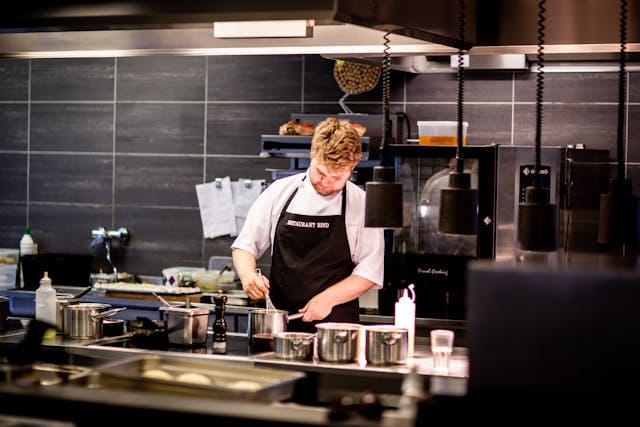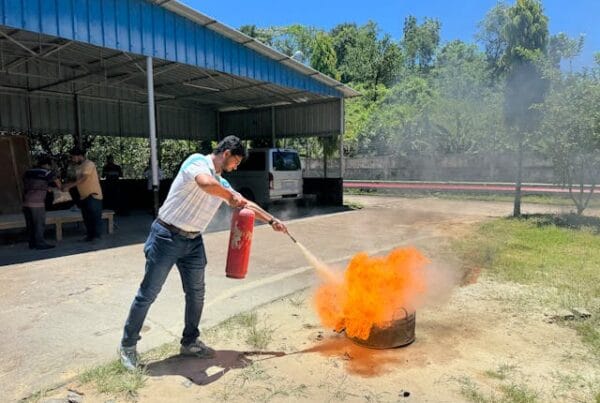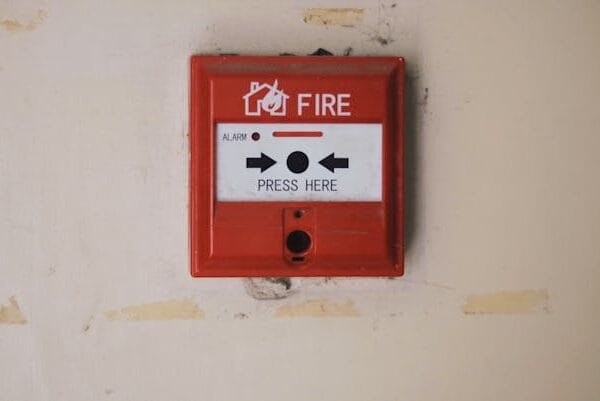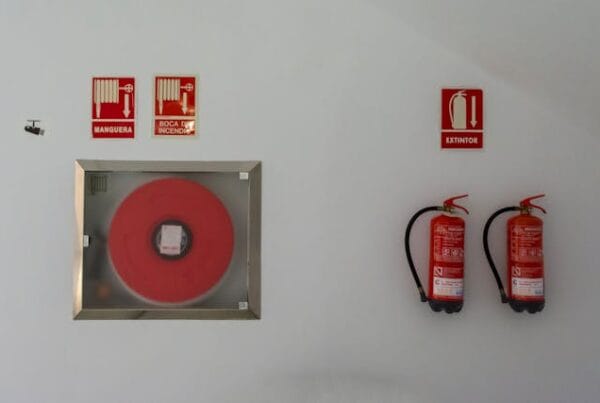Effective commercial kitchen fire prevention is one of the most significant challenges and responsibilities for any owner or manager in the food and beverage industry. Commercial kitchens are a unique high-risk environment, combining high heat, flammable cooking oils, and fast-paced activity. A simple flare-up on a stovetop can escalate into a devastating fire in seconds, capable of destroying a business and endangering lives. At Sefirepro, we provide specialized fire protection solutions tailored to the intense environment of commercial kitchens. This article will cover the essential components of a comprehensive fire safety strategy, from specialized suppression systems to crucial daily practices.
The National Fire Protection Association (NFPA) consistently reports that cooking equipment is the leading cause of fires in eating and drinking establishments. These fires often start as grease fires (classified as Class K), which are notoriously difficult to extinguish with conventional fire extinguishers like ABC powder or water. This unique risk requires a specialized approach to prevention and suppression.
Commercial Kitchen Fire Prevention: Understanding the Primary Hazard: Class K Fires
The first step in commercial kitchen fire prevention is understanding the nature of the primary threat.
- What is a Class K Fire? This class of fire involves combustible cooking media such as vegetable oils, animal fats, and grease.
- Why is it Dangerous? Cooking oils burn at extremely high temperatures. Applying water can cause a violent explosive reaction, spreading the burning grease. Standard ABC fire extinguishers may temporarily knock down the flames, but they don’t provide the cooling effect necessary to prevent the hot oil from re-igniting, a phenomenon known as “flashback.”
Due to this unique challenge, specialized Class K portable fire extinguishers and automated suppression systems are mandatory in commercial kitchens.
The Cornerstone of Protection: The Kitchen Fire Suppression System in Commercial Kitchen Fire Prevention
An automated kitchen fire suppression system is the most critical piece of safety equipment in any commercial kitchen. This pre-engineered system is installed directly in the kitchen hood and is designed to automatically detect and extinguish fires originating from the cooking appliances below.
Here’s how it works:
- Detection: The system has fusible links placed in the path of heat above the cooking surfaces. When a fire starts, the high temperature causes these links to melt and separate.
- Automatic Activation: The separation of the link triggers the system. A pressurized cylinder releases a wet chemical extinguishing agent.
- Suppression: The wet chemical agent is discharged through strategically placed nozzles onto the cooking appliances and into the plenum and exhaust ducts.
- Dual Effect: The agent works in two ways:
- It rapidly knocks down the flames.
- It reacts with the hot grease through a process called saponification, creating a thick, soapy foam blanket over the surface. This blanket smothers the fire and cools the oil, preventing re-ignition.
- Automatic Fuel Shut-off: Simultaneously, the system automatically shuts off the gas or electrical supply to the cooking appliances, cutting off the fire’s fuel source.
Sefirepro specializes in the design, installation, and semi-annual maintenance of these vital kitchen fire suppression systems, ensuring they are always ready to protect your business.
Essential Practices for Commercial Kitchen Fire Prevention
Technology alone is not enough. A proactive culture of safety and rigorous daily practices are essential for effective commercial kitchen fire prevention.
1. Regular Hood and Duct Cleaning
Grease buildup in the kitchen exhaust system (hood, filters, ducts, and fan) is the fuel that can turn a small stovetop fire into a building-wide catastrophe.
- Schedule: A professional, certified hood cleaning service must be employed regularly (typically quarterly or semi-annually, depending on cooking volume).
- Documentation: Keep records of all professional cleanings for insurance and inspection purposes.
2. Proper Housekeeping
- Clean grease from walls, work surfaces, and floors regularly.
- Store flammable liquids (like cleaning supplies) in proper containers and away from heat sources.
- Keep cooking areas free of clutter.
3. Staff Training
Your kitchen staff are your first line of defense. They must be trained on:
- How to use a Class K portable fire extinguisher using the P.A.S.S. technique.
- What to do if the automated suppression system activates.
- Basic fire prevention practices, such as never leaving cooking unattended.
- The location and operation of manual pull stations for the suppression system. Sefirepro offers hands-on fire safety training specifically for restaurant staff.
4. Regular Equipment Maintenance
- Ensure all cooking equipment is maintained according to the manufacturer’s instructions.
- Check for frayed electrical cords or faulty gas connections.
- Ensure safety features on deep fryers, such as automatic temperature shut-off controls, are functioning correctly.
Conclusion: Protect Your Culinary Business with Sefirepro
Commercial kitchen fire prevention requires a multi-layered approach that combines specialized technology with diligent human effort. An automated suppression system, clean exhaust hoods, well-maintained equipment, and a properly trained staff all work together to mitigate the high risks inherent in a cooking environment.
Don’t let a preventable fire turn your passion and investment into ashes. Contact the specialists at Sefirepro today for a comprehensive assessment of your kitchen’s fire safety. We provide end-to-end solutions to keep your kitchen, staff, and customers safe.





